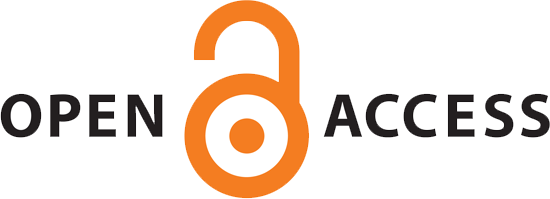Risk Assessment of Activities Involving Nanomaterials: Quantitative or Qualitative-That Is the Problem
Abstract
Health risk assessment of activities involving nanomaterials is a basic and necessary step toward reducing exposure to nanomaterials and, consequently, minimizing the effects resulting from such exposure. Health risk assessment methodologies in the presence of chemical substances, including nanomaterials, can be divided into three major groups: quantitative, semi-quantitative, and qualitative methods. The quantitative assessment of risks associated with activities involving nanomaterials faces a series of inherent limitations, which have led to its limited acceptance. The absence of well-established and universally agreed-upon occupational exposure limits, and the uncertainties surrounding the effects of nanomaterials on humans, are some of these limitations. Qualitative approaches, based on precautionary principles and expert judgment, offer flexible, context-sensitive evaluation, whereas semi-quantitative approaches have a more ordered framework that nonetheless allows for adaptability in the balancing of numerical analysis with qualitative insight. Yet, parallel efforts toward the development and refinement of quantitative methods must not be forsaken, as such methods are considered indispensable for the future to realize more accurate and reliable risk assessments. This will give a more holistic and realistic assessment of nanomaterial risks due to this dual approach.
2. Omari Shekaftik S, Shirazi FH, Yarahmadi R, Rasouli M, Solaymani Dodaran M, Ashtarinezhad A. Preliminary investigation of the symptoms of nanotechnology companies employees in Tehran, Iran, 2018. J Occup Hyg Eng. 2019;6(2):61–70.
3. Omari Shekaftik S, Ashtarinezhad A, Yarahmadi R, Rasouli M, Soleimani M, Shirazi FH. Relationship between chemical composition and physical state of used nanomaterials in nanotechnology companies with type and prevalence of symptoms of employees in Tehran, Iran. Iran Occup Health. 2020;17(2):1–12.
4. Mehrparvar N, Shirazi FH, Abolghasemi J, Moghadasi N, Omari Shekaftik S, Ashtarinezhad A. A tool for preliminary health and safety risk assessment of activities involved with nanomaterials: design and validation. J Nanopart Res. 2023;25(11):214.
5. Omari Shekaftik S, Biganeh J, Hosseinzadeh M, Jafari Nodoushan H, Mehrparvar N. Health risk assessment of chemicals: from bulk to nano. J Health Saf Work. 2024;14(4):889–915.
6. Hallenbeck WH. Quantitative risk assessment for environmental and occupational health. Boca Raton: CRC Press; 1993.
7. Vose D. Risk analysis: a quantitative guide. Chichester: John Wiley & Sons; 2008.
8. Zhang M, Ichihara G, Zhou Z, Lou J, Wang D. Editorial: qualitative and quantitative risk assessment of hazardous substances in the workplace. Front Public Health. 2023;11:1223561.
9. Zhou L, Xue P, Zhang Y, Wei F, Zhou J, Wang S, et al. Occupational health risk assessment methods in China: a scoping review. Front Public Health. 2022;10:1022106.
10. Zhou L, Tian F, Zou H, Yuan W, Hao M, Zhang MB. Research progress in occupational health risk assessment methods in China. 2017.
11. Xu Q, Zhang M, Xu L, Yuan W, Ren H, Wang P, et al. Evaluation of strategies for the occupational health risk assessment of chemical toxicants in the workplace based on a quantitative analysis model. Front Public Health. 2022;10:889038.
12. Tian F, Zhang M, Zhou L, Zou H, Wang A, Hao M. Qualitative and quantitative differences between common occupational health risk assessment models in typical industries. J Occup Health. 2018;60(5):337–47.
13. Matuszewska-Majcher E. The overview of applied methods for occupational risk assessment. Syst Wspomag Inżyn Produkcji. 2017;6:83–92.
14. Li M, Huang D, Liu M. Review of recent researches on occupational health assessment in China. Procedia Eng. 2012;43:464–71.
15. Omari Shekaftik S, Jadid H, Dehdashti MJ, Mohammadian Y, Ebrahimi W. Toward a minimum data set for assessing the risks of activities involved with nanomaterials. J Nanopart Res. 2023;25(2):25.
16. Schulte P, Murashov V, Zumwalde R, Kuempel E, Geraci C. Occupational exposure limits for nanomaterials: state of the art. J Nanopart Res. 2010;12(6):1971–87.
17. Kuempel ED, Geraci CL, Schulte PA. Risk assessment and risk management of nanomaterials in the workplace: translating research to practice. Ann Occup Hyg. 2012;56(5):491–505.
18. Nasirzadeh N, Omari Shekaftik S. Occupational exposure to nanomaterials: hazards, toxicity and safety concerns. In: Faheem M, Ditta A, Du J, editors. Nanomaterials in Industrial Chemistry. Boca Raton: CRC Press; 2024. p. 179–216.
19. Omari Shekaftik S, Mehrparvar N, Peivandi Z, Shahtaheri SJ. Risk assessment of occupational exposure to engineered and incidental nanomaterials: differences and challenges. J Nanopart Res. 2024;26(4):67.
20. Zhu J, Su S, Wen C, Wang T, Xu H, Liu M. Application of multiple occupational health risk assessment models in the prediction of occupational health risks of n-hexane in air-conditioned closed workshop. Front Public Health. 2022;10:829676.
21. Xu Q, Yu F, Li F, Zhou H, Zheng K, Zhang M. Quantitative differences between common occupational health risk assessment models. J Occup Health. 2020;62(1):e12164.
22. Omari Shekaftik S, Nasirzadeh N, Mohammadiyan M, Mohammadpour S. An analysis on control banding-based methods used for occupational risk assessment of nanomaterials. Nanotoxicology. 2023;17(10):628–50.
| Files | ||
| Issue | Vol 16 No 2 (2024) | |
| Section | Original Article(s) | |
| Published | 2025-08-30 | |
| Keywords | ||
| Nanoparticles Risk Assessment Nanotechnology Health and Safety | ||
| Rights and permissions | |

|
This work is licensed under a Creative Commons Attribution-NonCommercial 4.0 International License. |



